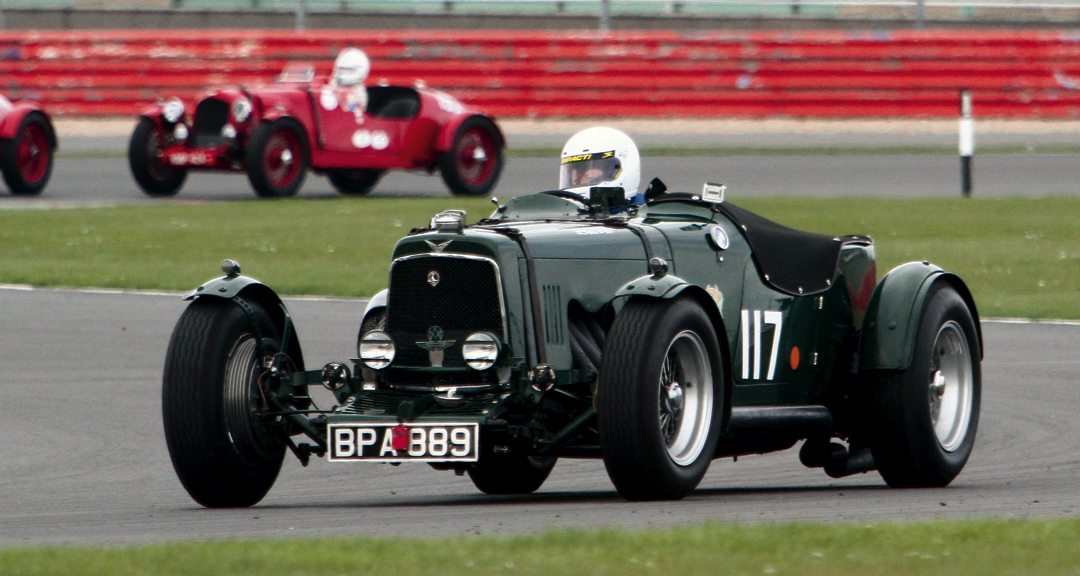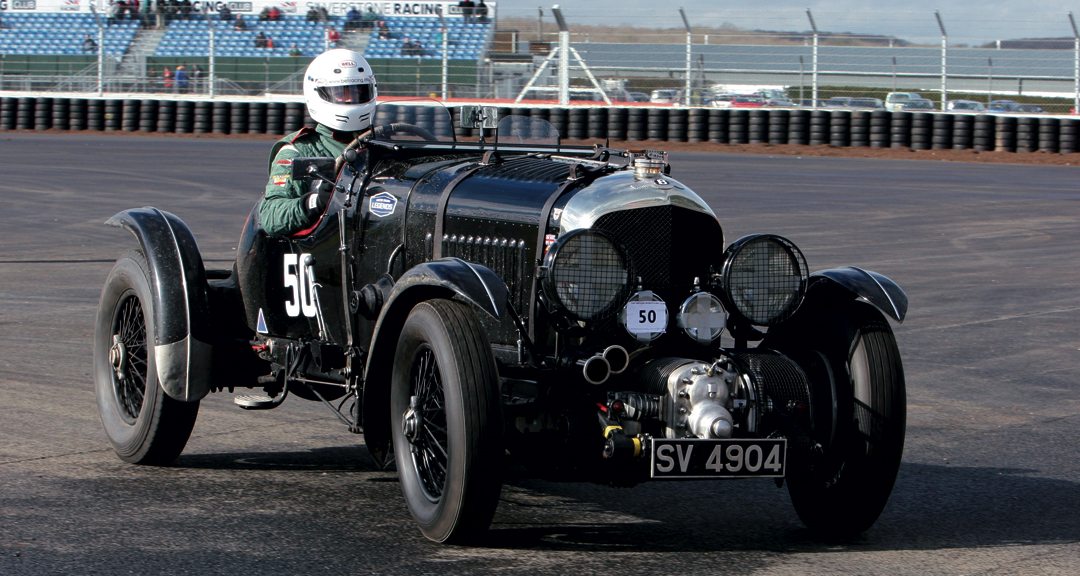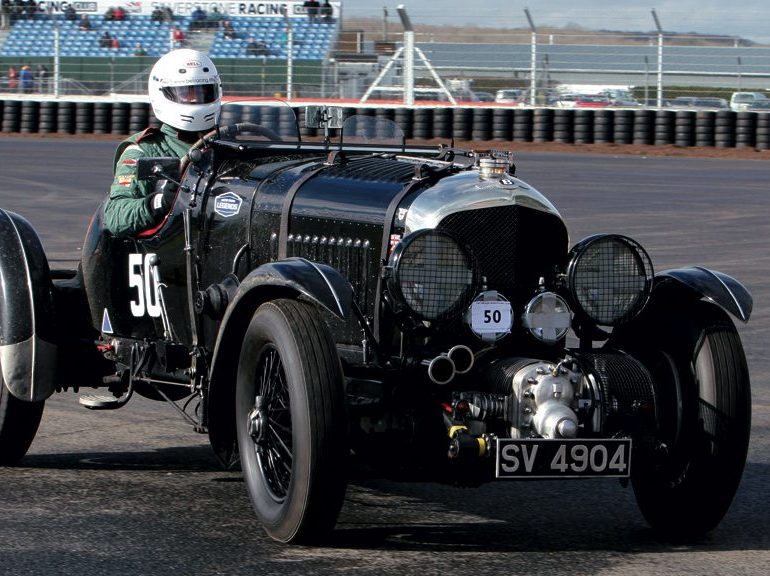From the very beginning of the automobile, man built cars to compete with a passion for speed and technology. These early innovators are in an elite club with their place in automotive history guaranteed as the creators of a true classic sports car, a genuine thoroughbred.
The development of the racing sports car can be traced to specific manufacturers, who at one time in history dominated motor racing, in particular, the world’s most challenging road races, such as the Mille Miglia, Targa Florio and endurance contests such as the 24 Hours of Le Mans.
The creation of an automobile that could win in international competition was usually the inspiration of one passionate man, an engineer, a genius, who put all of his design and engineering skills toward his goals.
Part one of this pre-war market guide will feature some of these exciting cars, their founders and designers, men like Augustus Bertelli at Aston Martin and W.O. Bentley at Bentley.
Today, these pre-war masterpieces are highly sought after by the sophisticated collector. They and their current owners are often invited to partake in the most prestigious historic racing venues worldwide—the Le Mans 24 Hour Classic, Mille Miglia Storica, Monaco Historique Grand Prix and the Targa Florio, to name but a few.
Due to the age of these cars and their racing heritage, their value is determined by their originality and provenance. Old cars built up from parts are not the same as true complete survivors. In many cases, this attrition can bring the remaining total down to less than ten good surviving examples of a particular model.
| Make | Model | Level III | Level II | Level I |
| AC | 12/24 | $100,000 | $125,000 | $175,000 |
| 12/40 | $100,000 | $125,000 | $175,000 | |
| Ace 16/56 | $125,000 | $175,000 | $225,000 | |
| Ace 16/66 | $150,000 | $200,000 | $250,000 | |
| Ace 16/80 – 16/90 | $175,000 | $225,000 | $275,000 | |
| Alfa Romeo | RL Targa Florio | $1,000,000 | $1,200,000 | $1,300,000 |
| 6C 1500 SS/SC | $1,000,000 | $1,200,000 | $1,300,000 | |
| 6C 1750 GS/SC Zagato | $1,500,000 | $1,750,000 | $2,000,000 | |
| Tipo B Monoposto P3 | $7,000,000 | $8,000,000 | $9,000,000 | |
| Tipo C Monoposto 8C35 | $5,000,000 | $6,000,000 | $7,000,000 | |
| Tipo 8C 2300 | $6,000,000 | $7,000,000 | $7,500,000 | |
| Tipo 8C 2300 Lungo (Le Mans) | $6,000,000 | $7,000,000 | $8,000,000 | |
| Tipo 8C 2300 Corto (Mille Miglia) | $6,000,000 | $8,000,000 | $9,000,000 | |
| Tipo 8C 2300 Spider Corsa (Monza) | $7,000,000 | $9,000,000 | $10,000,000 | |
| Tipo 8C 2900B Lungo | $8,000,000 | $9,000,000 | $10,000,000 | |
| Tipo 8C 2900B Corto | $9,000,000 | $10,000,000 | $11,000,000 | |
| Alvis | 4-Cyl., FWD | $250,000 | $300,000 | $350,000 |
| Amilcar | 6C | $200,000 | $250,000 | $300,000 |
| Aston Martin | Ulster Mk II | $500,000 | $600,000 | $700,000 |
| Lemans | $600,000 | $700,000 | $800,000 | |
| 2-Liter Speed Model | $350,000 | $450,000 | $500,000 | |
| Bentley | 3-Liter Speed Model | $900,000 | $1,100,000 | $1,300,000 |
| Big Six | $1,900,000 | $2,100,000 | $2,300,000 | |
| 4.5-Liter | $1,900,000 | $2,100,000 | $2,300,000 | |
| Speed Six | $4,500,000 | $5,000,000 | $6,000,000 | |
| 4.5-Liter Blower | $6,000,000 | $6,500,000 | $7,000,000 | |
| BMW | 328 | $900,000 | $1,000,000 | $1,100,000 |
| Bugatti | Type 35 | $1,500,000 | $2,000,000 | $2,500,000 |
| Type 37A Supercharged | $2,000,000 | $2,500,000 | $3,000,000 | |
| Type 51 | $3,000,000 | $4,000,000 | $4,500,000 | |
| Type 57SC Atalante | $6,500,000 | $7,500,000 | $8,000,000 |
Aston Martin Le Mans

Photo: Pete Austin
Founded by Lionel Martin in 1914, Aston Martin is one of the oldest automotive companies still active today. Purchased in 1926 by Augustus Bertelli, an engineer, Aston quickly became known for its well-built sports and racing cars and had international racing success in 1931, finishing 5th overall and winning the 1,500-cc class at the 24 Hours of Le Mans. This same finish was accomplished again in 1932 and 1933, both times against the might of Alfa Romeo. A series of just over 100 examples of the 2 and 2/4 seater Le Mans were built to celebrate Aston’s Le Mans success. The coachwork was by E. Bertelli LTD. The cars were fitted with cycle fenders, which turned with the wheels. This was a low chassis design and evolved into the second and third series, as well as the Ulster Mark II—all were powered by a Bertelli-designed 1,495-cc SOHC engine. These are sleek, well-built and exciting cars.
1929 Bentley 4.5-Liter Blower

Photo: Pete Austin
W.O. Bentley formed Bentley Motors Ltd. in 1919 and set out to build a high-quality sports tourer. The company had tremendous success with the 3-liter, the Speed 6 and other models. W.O. loved racing and had a car compete in the 1922 Indianapolis 500 that finished 13th. During the 1920s, Bentleys won the 24 Hours of Le Mans five times. This period was not without some financial trouble, however, as Bentley needed to be bailed out during the 1920s by diamond mine heir Wolff Barnato. One of the most unique of Bentley’s cars, with the right amount of power and handling for the day, was the 4.5-liter, 2-valve-per-cylinder supercharged Blower Bentley. It had more power than the 3-liter, but did not burn off the tires like the 6.5-liter. These were built on a steel chassis with an aluminum body, four-wheel drum brakes, and leaf spring suspension. It was the idea of racing driver, Sir Henry “Tim” Birken, supported by Barnato, but built against the wishes of W.O. Bentley himself. Fifty-four cars were equipped with the supercharged engine. With a Bentley weighing in at over 3,600 pounds, Ettore Bugatti once said, “W.O. makes the most well-built trucks in the world.” Ironically, today the 4.5-liter Blower Bentley is highly sought after by collectors, but it was the other models that had the racing success.
Criteria Used For Assessing Valuations for this Guide:
- Degree of Originality
- Overall Condition, Restoration
- Technology, Design, Coachbuilder
- Production Numbers/Rarity
- Competition History
- Ownership History, Documentation
- Modern Event Eligibility
Regional Variances
The prices stated in this guide are based on U.S. values. The values of historic racing cars can vary as much as 25%-35% in other countries, depending on local market appeal, currency rates, import duties, and VAT. Most of the time, we are able to document known sales or closed escrows, as they say in real estate. When this is not possible, a logical estimate of the car’s value is given, based on its sales history and relationship to cars of its type.
The prices stated in this guide are based on U.S. values. The values of historic racing cars can vary as much as 25%-35% in other countries, depending on local market appeal, currency rates, import duties, and VAT.
LEVEL |
VALUATION CATEGORIES |
|---|---|
I |
The best combination of all criteria. |
II |
Satisfies mid-range of criteria. |
III |
In need of restoration. Meets only a few points of criteria |




